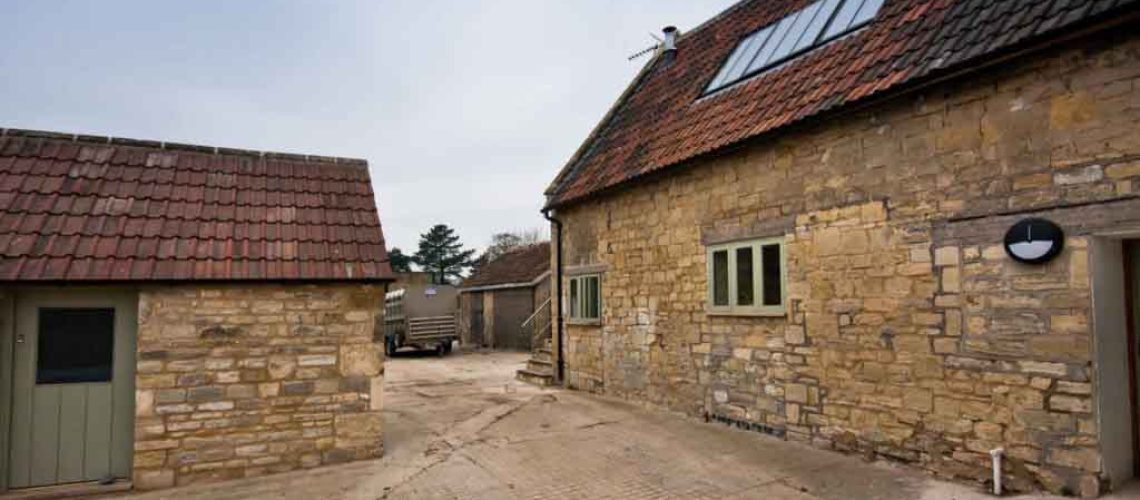


Working on a Listed Building
Undertaking the research and obtaining any necessary permissions is all part and parcel of owning a listed building. Here we explain what you need to consider ahead of any maintenance or renovation work.
Please! – What is Listed Building Consent?
There are a number of government bodies that aim to save, protect and champion buildings, parks and monuments considered to have heritage value and merit being ‘listed’. These include Historic England (formerly English Heritage), Historic Wales, Historic Scotland and the Built Heritage Directorate of the Northern Ireland Environment Agency.
All listed buildings can be found online, and the listing describes the aspects of the building that have been documented as a heritage asset, this often includes the surrounding grounds of the building, including perimeter walls and fences.
To make changes to any building on the list, you need to apply to the relative governing body for Listed Building Consent before any work being carried out, this refers to both internal and external changes.
Listed buildings come in three categories of significance: Grade I for buildings of the highest significance; Grade II*, and Grade II.
Most listed building owners are likely to live in a Grade II building, as these make up 92% of all listed buildings, listing means there will be extra control over what changes can be made to a building’s interior and exterior.
As an owner of a historic building you will need to apply for Listed Building Consent for most types of work that affect the ‘special architectural or historic interest’ of their home.
Forgiveness! – What is Retrospective Consent?
Retrospective Consent is required when works have been carried out without approval from the local planning authority or any other governing body, such as Historic England.
If you’ve undertaken the work without prior permission,you’ll need to ‘regularise’ any unauthorised development that’s facing potential enforcement action.
Often, people discover that something they thought was perfectly acceptable to do with their listed home isn’t. In this instance, they would need to apply for Retrospective Listed Building Consent, which involves putting in a full Listed Building Consent application.
Listed buildings in conservation areas
Living in a conservation area adds an extra dimension to how your renovation will be assessed, you will not only need to preserve or enhance the setting of the listed building but will also need to do the same in the context of the conservation area.
A conservation area takes into account the general streetscape, whereas Listed Building Consent will relate more to the specifics of your property.
Conservation areas involve extra planning controls and considerations, but these exist to protect the historical and architectural elements that make the place special, They are most likely to affect owners who want to work on the outside of their building.
If you live in a conservation area, you’ll need to get approval from both the council and Historic England [or your local equivalent] for any substantial works being carried out externally to the property. If the building is listed, too, you may need to seek approval for any internal alterations.
It’s also worth noting, that any trees in a conservation area are commonly protected under a Tree Preservation Order, they cannot be altered without prior approval from the local planning authority.
Will general on-going maintenance inside and out also require consent?
As a rule, you don’t need to get consent for general maintenance. But it does depend on the scale of the maintenance, If there’s no material change and the maintenance is considered to be essential for the upkeep of the building, then approval is not required.
if you need to clean and paint the rainwater goods cast iron gutters and downpipes and you paint them in the same colour, it would be considered acceptable. However, if an old metal gutter is broken and needs replacing, then it would have to be replaced on a like-for-like basis. Most profiles of cast iron guttering are still available and when they are not; sand cast copies can be taken
in order to reproduce exact replicas.
Contact the local council’s heritage officer and English Heritage [or your equivalent] to ask if they consider it to be worthy of a formal application, Often, they’ll provide a quick email response to say formal approval is not required; on the assumption it’s on a like-for-like basis.
If you live in a listed building, it’s always advisable to seek advice before touching the actual fabric of your property, if it’s Grade I listed, this includes changing any internal finishes or walls. Essentially, if it’s listed, you can take nothing for granted and should check with your local conservation officer before carrying out any works.”
In the Money – grant for repair and conservation work
There are grants available for certain types of work, but they can be difficult to obtain without a substantial amount of red tape to prove you qualify for any subsidy.
The grants can be for repairs, management projects or research, however, if you’re looking for a contribution for small repairs or a new extension to your property, it could be difficult or impossible to obtain.
Justify a development under the Enabling Development argument, as defined by Historic England. So you could propose a new residential development within an estate, for example, to justify and help pay for the repair of a dilapidated listed building.
Unfortunately, for private owners of listed properties, grants are very few and far between, Aa small A small number of local authorities still provide small discretionary grants for buildings of architectural or historic interest. It’s best to contact them directly to find out whether they offer any funding.
Thd National Lottery Heritage Fund and Historic England, both provide grants in very particular circumstances. A good source for grants is the the Listed Property Owners’ Club. The club is an authoritative source of information and advice on the maintenance, responsibilities and obligations of ownership of Britain’s protected buildings.
Advice on listed building renovation
If you are upgrading a listed building, it’s crucial to get organised early by contacting your local conservation officer and finding an architect who understands the requirements.
The Historic England website has an excellent advice section for professionals and homeowners,there’s a contact number you can call to discuss any queries with a specialist on the phone. The key with any listed building renovation, he says, is research, research – and more research.
The Royal Institute of British Architects RIBA also provides a lot of helpful information relating to services around heritage buildings, If you’re looking for an architect with particular heritage experience, you can contact RIBA directly to find professionals in your area who are suitable for your project.”